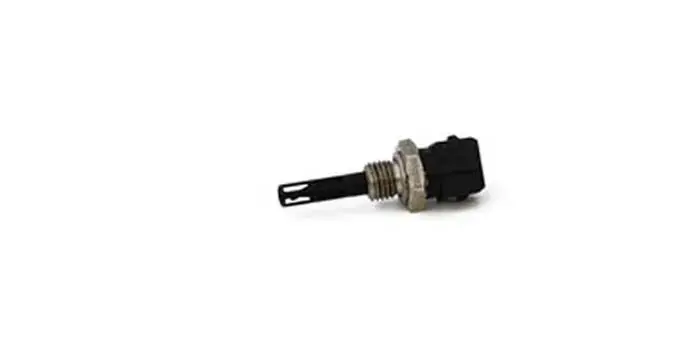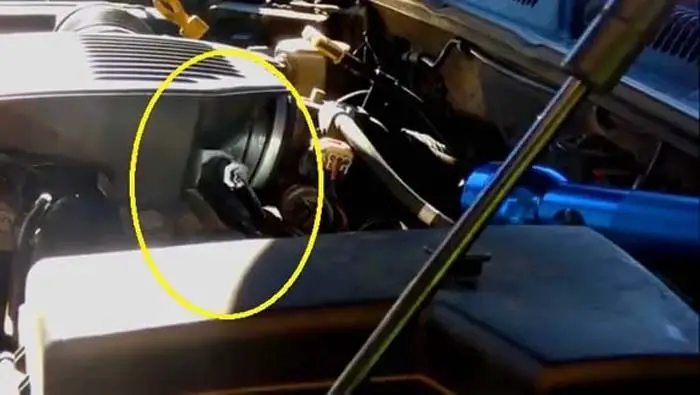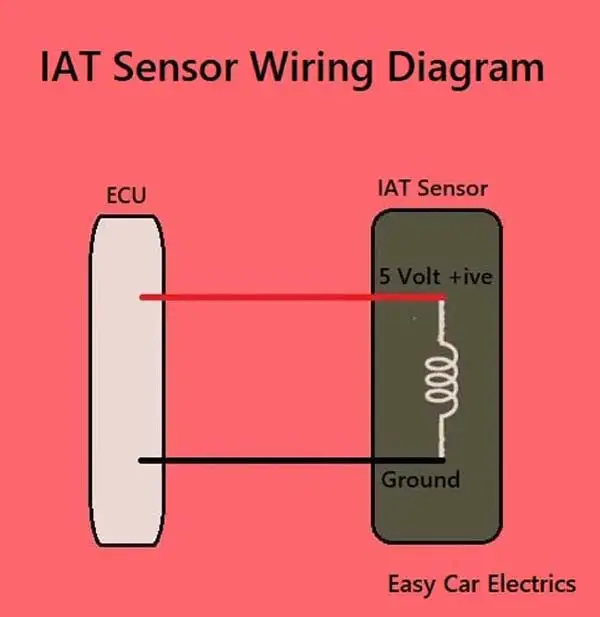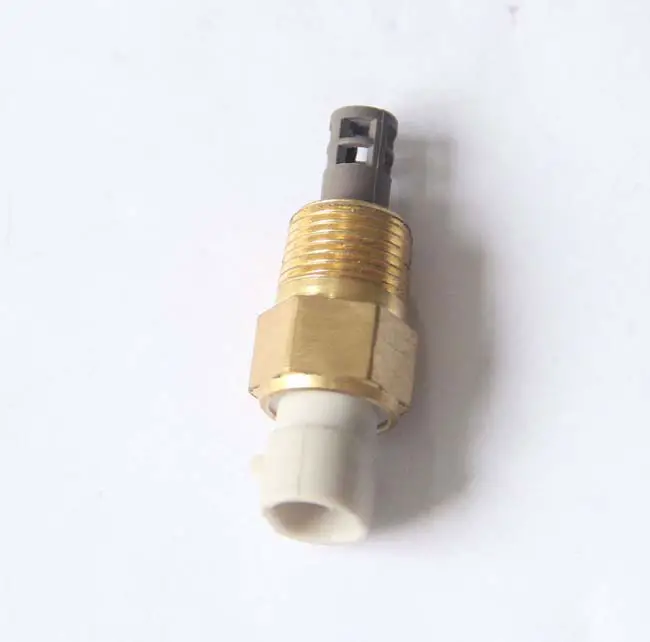
The temperature of the air entering the engine is tracked by the Intake Air Temperature sensor (IAT). This data is required by the engine computer (PCM) to calculate air density and balance the air/fuel mixture. Since colder air is denser than hot air, more fuel must be used to keep the air/fuel ratio constant. By providing data on the air temperature entering the engine, an intake air temp sensor is essential to engine performance.
When your car won’t start, it can be frustrating trying to figure out the cause. If you have a newer car, it may have an air temperature sensor. This sensor is responsible for measuring the air temperature in the intake system. If you’re wondering if an IAT sensor can cause a car to not start, this article has the answer.
What is Intake Air Temperature Sensor
The Intake Air Temperature (IAT) Sensor is an essential component of modern automotive internal combustion engines. It serves as an indicator for monitoring the air temperature coming into the engine, which has a direct impact on fuel economy and performance. It is positioned in the air cleaner housing or screwed into the intake manifold. This sensor can be built into Mass Air Flow (MAF) sensor or Manifold Absolute Pressure (MAP) Sensor.
The sensor typically consists of a thermistor, which is a heat-sensitive resistor that functions as part of an electrical circuit. When the thermistor is exposed to changing temperatures, IAT cause changes in its resistance, which can be measured and used to determine the outside air temperature.
Related Post: Intake Air Temperature (IAT) Sensor, How It Works & Function
Symptoms of a Bad Intake Air Temperature Sensor
Here are some common symptoms of a faulty car’s intake air temperature sensor:
- Rough Idle: The car’s engine may idle roughly or may have an issue with the throttle when the sensor goes bad, causing a disruption in the air/fuel ratio.
- Poor Acceleration: An intake sensor failure may cause the engine to hesitate or jerk during acceleration due to a lean air/fuel mixture.
- Increased Fuel Consumption: If the sensor is sending incorrect readings to the engine’s computer, the ECU may increase the amount of fuel injected into the engine, causes increased fuel consumption.
- Check Engine Light: A troubleshooting sensor may trigger the check engine light to come on causing the engine to stumble. A diagnostic scan tool can read the codes and identify the problem.
- Engine Misfires: A malfunctioning sensor can cause the car engine to misfire or run roughly, particularly at high RPM or under heavy loads.
It’s important to note that these symptoms can also indicate other problems with the engine, so proper diagnosis is essential to avoid unnecessary repairs.
Will IAT Sensor Cause No Start
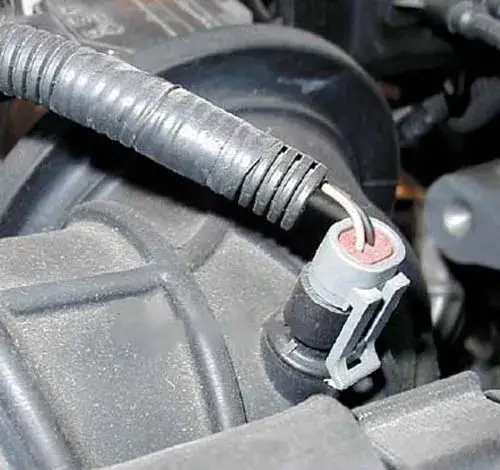
An IAT sensor assists in ensuring smooth operation and optimum performance under all circumstances by keeping track of this temperature and changing the fuel mixture and affecting ignition timing accordingly. Therefore, it’s crucial to take care of your IAT sensor and make sure that it is functioning properly if you want to keep your automobile running smoothly.
The air temperature sensor will not cause a no-start condition, however, it may make it difficult to start. The IAT sensor measures the temperature of the air intake and sends a signal to the engine control unit (ECU). If the air temperature sensor is not performing properly, the engine control module will not be able to properly adjust the fuel mixture, making it difficult to start the engine. For the bad IAT sensor, the ECM will use pre-determined settings for air/fuel mixture and ignition timing. The bad sensor result in decreased performance and fuel economy.
The engine’s hard starting while it’s cold is one of the notable symptoms of a bad intake air temperature sensor. The engine became challenging to start as a result. The engine may run rough if the IAT sensor is not operating properly. This may result in issues including stalling, sluggish acceleration, and power loss. You might have an issue with the throttle body. It’s a good idea to get your car examined by a car repair or mechanic if your engine is running rough or you’re having trouble starting it.
Engine misfires are another typical sign of an Air Temperature sensor issue. The ignition timing may be wrong when the Intake Air Temperature sensor is damaged, which may result in engine misfires. If you are facing an issue with the starting time of the engine you need to figure out the problem.
Maintaining your Air Temperature sensor will keep your car operating smoothly and help you avoid costly engine damage.
Related Post: What Would Happen If Intake Air Temp Sensor Is Unplugged
How to Diagnose a Faulty IAT Sensor
here are the steps to diagnose a faulty air temperature sensor:
- Use A diagnostic Scan Tool: A diagnostic scan tool can read the ECM’s fault codes and identify if there’s an issue with the air temperature sensor.
- Check Sensor Resistance With A Multimeter: With the engine off, disconnect the electrical connector from the sensor and set your multimeter to the ohms setting. Place one lead of the multimeter on one of the sensor terminals and the other lead on the other terminal. Compare the reading to the manufacturer’s specifications. If the reading is out of range, the sensor may be faulty and need replacement.
- Check Sensor Voltage With A Multimeter: With the ignition on, but the engine off, connect the positive lead of the voltmeter to the signal wire of the sensor, and the negative lead to a good ground. Compare the voltage reading to the manufacturer’s specifications. If the reading is changed then the sensor is faulty.
- Check The Sensor’s Wiring And Connector: Visually inspect the sensor’s wiring and connector for damage or corrosion. If there are any issues with the wiring, repair or replace it as needed.
How to Fix a Faulty Intake Air Temperature Sensor
Here are the steps to fix a faulty air temperature sensor:
- Purchase A Replacement Sensor: Make sure to get the correct replacement sensor for your vehicle’s make and model.
- Locate The Faulty Sensor: The air temperature sensor is typically located on the air intake duct or air filter box.
- Disconnect The Electrical Connector: Use a connector release tool, if necessary, to disconnect the electrical connector from the sensor.
- Remove The Sensor: Use a wrench or socket to remove the faulty sensor from the air inlet duct or air filter box. Be careful not to damage any other components.
- Install The New Sensor: Carefully insert the new sensor into the air inlet duct or air filter box and tighten it with a wrench or socket.
- Reconnect The Electrical Connector: Connect the electrical connector to the new sensor and make sure it is securely fastened.
- Clear The ECM’s Fault Codes: Use a diagnostic scan tool to clear any fault codes stored in the ECM related to the defective sensor.
- Test The Engine: Start the engine and monitor its performance. If the symptoms have improved, then the new sensor has likely fixed the problem.
It’s important to follow the manufacturer’s instructions when installing the new sensor and to handle it carefully to avoid damaging it. Also, keep in mind that other issues with the engine may cause similar symptoms to a faulty intake air sensor. Proper diagnosis is essential to avoid unnecessary repairs.
Conclusion
In conclusion, the IAT sensor is an important component when it comes to a successful engine start. You would check the sensor regularly if you are facing issues during starting the vehicle. If you’re experiencing any issues with your engine, having the air temperature sensor inspected should be among the first steps taken in order to ensure safe and reliable operation. Additionally, any additional components such as spark plugs, fuel filters, and other sensors should be checked for possible symptoms of wear or damage.
Frequently asked questions ( FAQ)
A car engine surge can be caused by several factors, such as a malfunctioning fuel pump, injector, or crankshaft. It can also be caused by issues with the engine.
Regular engine maintenance, such as changing the engine oil, keeping up to date with the latest service schedules, and ensuring that all components are functioning properly, can help achieve optimal efficiency for a car and keep it running smoothly. Failure to do so can lead to issues such as shutter or failure to get back on the road
Sign Up

